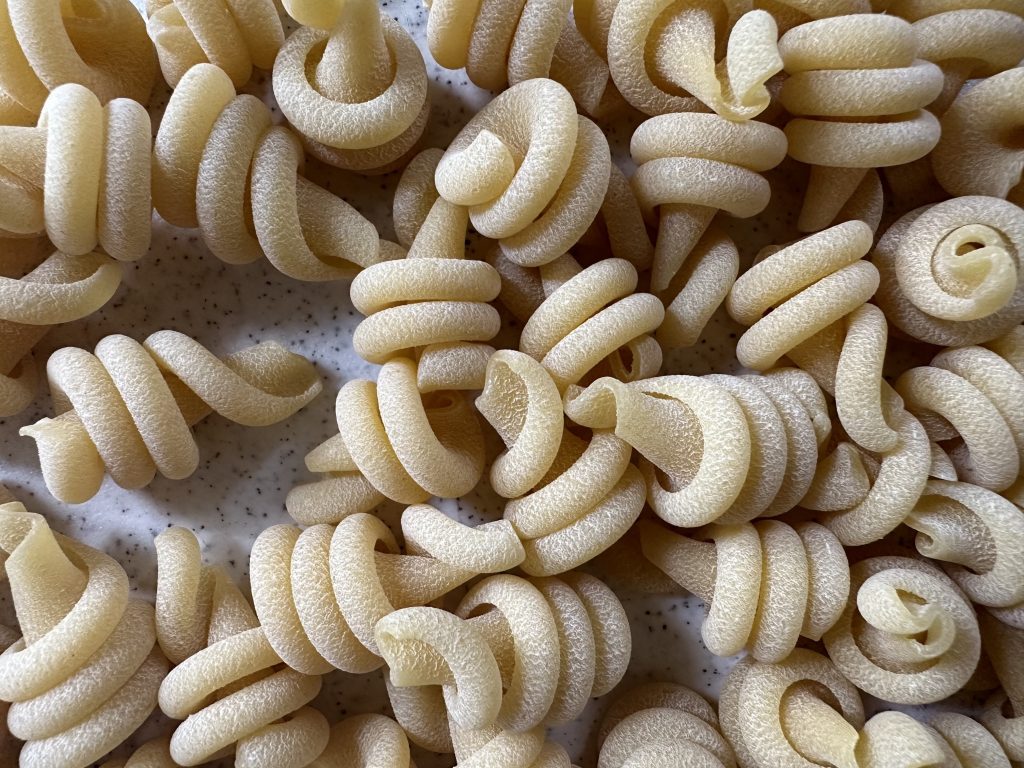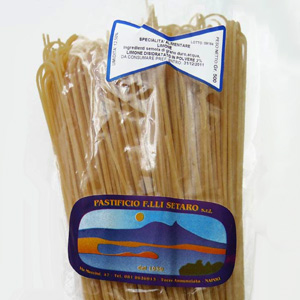Factory Visit: Sporkful + Sfoglini Invent New Cascatelli Pasta Shape
An exclusive look at the creation of pasta with high “sauceability, forkability and toothsinkability,” by Dan Pashman and Steve Gonzalez

While evidence of Italian pasta exists back to the 13th century (though most probably descends from ancient Asian noodles), it’s not often that a new pasta shape is invented. For this reason, we were thrilled to take an exclusive look at the just-launched Cascatelli—a collaboration between Sfoglini and Sporkful. Born from Sporkful creator Dan Pashman’s desire to make something of his own and Sfoglini’s enthusiasm for experimentation, Cascatelli promises to be a versatile, high-quality pasta that boasts high “sauceability, forkability and toothsinkability”—Pashman’s criteria for a successful pasta shape.
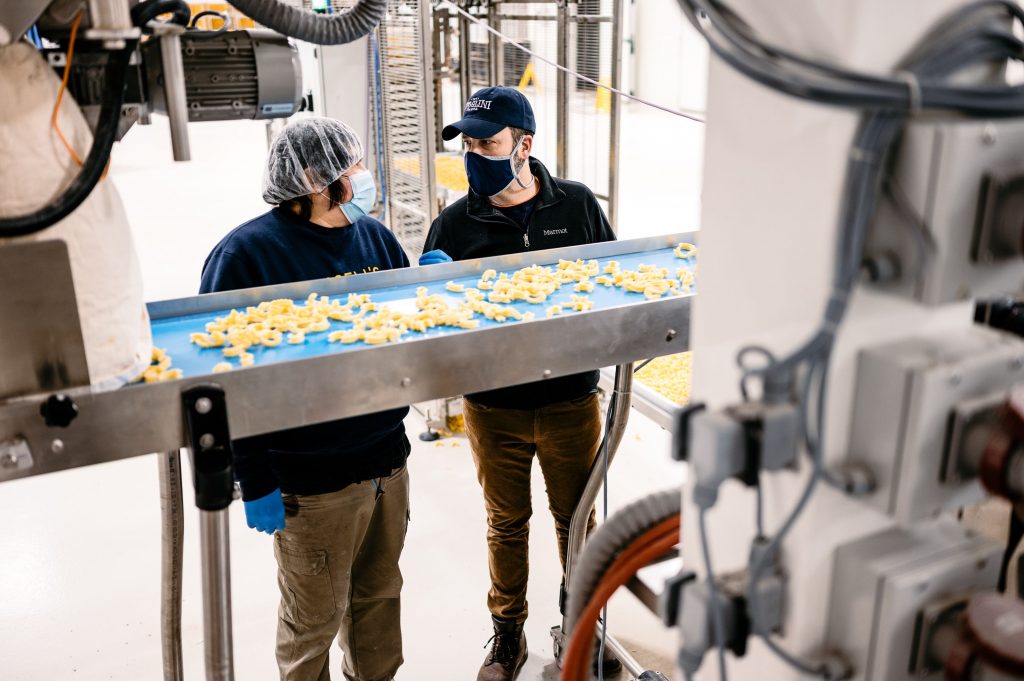
We toured the facility in Coxsackie, New York—led by Pashman and Sfoglini co-founder Steve Gonzalez—to see the new pasta shape, learn how it’s made and find out what inspired the creation of Cascatelli.

“I have always had a lot of opinions about food,” laughs Pashman. “Probably to an annoying degree, I’m sure, for some people. I love pasta, but a lot of shapes that people are always talking about how great they are, I’m looking at them and eating them and am like ‘I don’t know.’ I mean, all pasta is good; I love pasta. But [I would think] ‘Maybe it’d be a little better if they did that’ or ‘Cross this one with that one’ or ‘That one just totally sucks’—bow ties, ugh! Fusilli, it’s hard down the center and mushy on the outside. Spaghetti, spaghetti is not that great—it’s round so it has a low surface area in relation to volume so it’s not tactile. We can do better.”
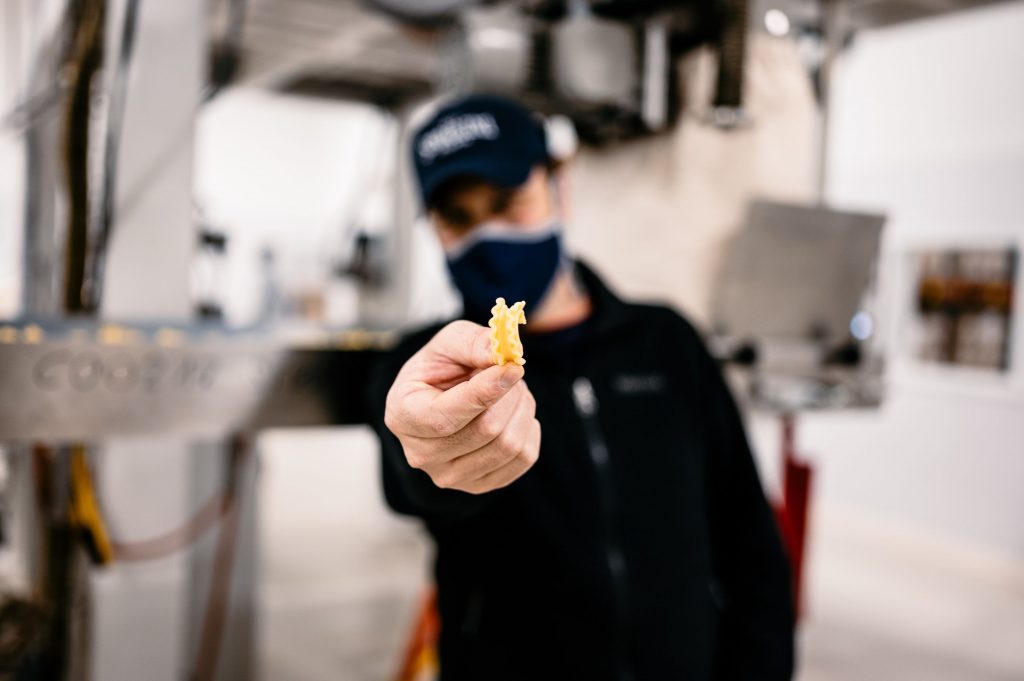
On the opposite side of these strong opinions, Pashman felt he was in the middle of a conundrum that was tinged with self-doubt. “I built a large part of my career on these opinions about food and yet, I’ve never really made anything. So maybe I don’t know what I’m talking about. Do I know what I’m talking about? Maybe I’m just totally full of it,” he says. Teaming up with Sfoglini to create a brand new pasta shape, Pashman says, was “the ultimate test of all my food opinions” and, we imagine, just the start of his desire to create better things.

Three years of development went into creating Cascatelli, but Pashman has been thinking (and talking) about inventing something since 2015. Pasta seemed like the obvious choice since it’s beloved the world over for being affordable, versatile and convenient. “I wanted something that was not expensive, something that was not perishable—because I wanted people all over the country, and even maybe the world, to be able to try it. I didn’t want something super-precious that was only going to be in boutiques,” he says.
In early 2019, he went to North Dakota State University’s Pasta Lab, and was also experimenting with different shapes at home. By fall in 2019, Pashman had teamed up with Sfoglini.

Gonzalez (a chef with 14 years experience, including a degree in Culinary Arts from the Art Institute of Colorado) tells us this kind of collaboration perfectly melds with Sfoglini’s intention to experiment and to provide quality products that have a distinct point of difference. “This is what we tried to do when we started the company: to bring back weird shapes and stuff that wasn’t really available at the time,” he says.

The shape—with its ruffled, waved edges and rough, flat and elongated center—increases its “sauce-ability.” This coarse surface is thanks to Sfoglini’s manufacturing process, which employs a bronze die—the traditional, Italian method. “Bronze dies leave a rough surface on the pasta and it creates a small amount of pasta dust,” Pashman explains. “I wanted that rough surface, which makes it look a little like sandpaper, and that makes sauce stick to it more.” Most supermarket pastas are made with Teflon dies, which are better for mass production, but result in a slick, smoother pasta. The collaborators were aligned on making something that mingles tradition with innovation.

“I love it,” Gonzalez says. “It kind of combines my two favorite things about our two top-selling pastas. Our Trumpets, which have that same kind of curly edge to them that really holds sauce, but if you over-stir it, that ridge can break off, but [for Cascatelli] he [Pashman] made it a little bit thicker so that wouldn’t happen so much. And then my second favorite and our other top-seller is a Reginetti which is a shorter cut of that. Those two shapes work really well, so this kind of combines that length and the ridged edge. This shape works with so many different dishes; it’s hardy and sturdy.”
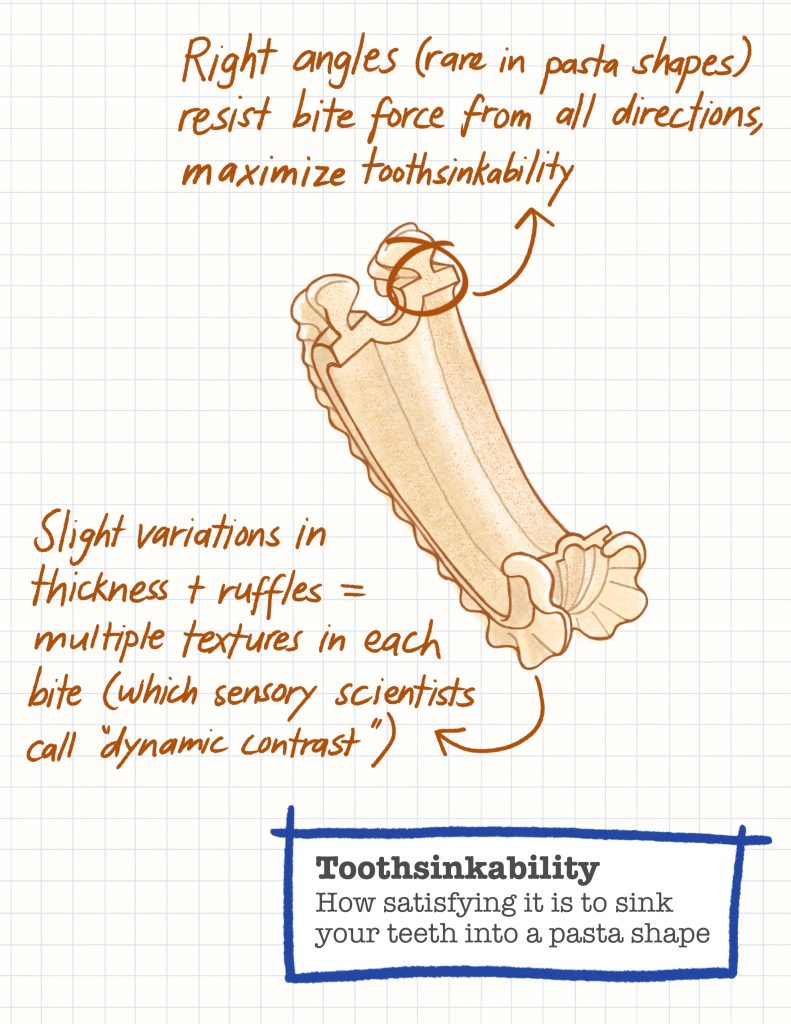
Not only was “sauceability” front of mind, but so too was “toothsinkability.” As Pashman explains, “The ruffles join the main strip at a right angle. I haven’t been able to find another pasta shape like that… A pasta that’s extruded with a right angle or two walls that are perpendicular. What makes that special is that it creates resistance to the bite from any direction.” The shape works with most sauces, and it cooks evenly, leading to the perfect bite. “The spot where they meet cooks a little less, but it’s not too much of a difference,” he says. “It’s a little soft and a little firm, it’s that dynamic contrast.”
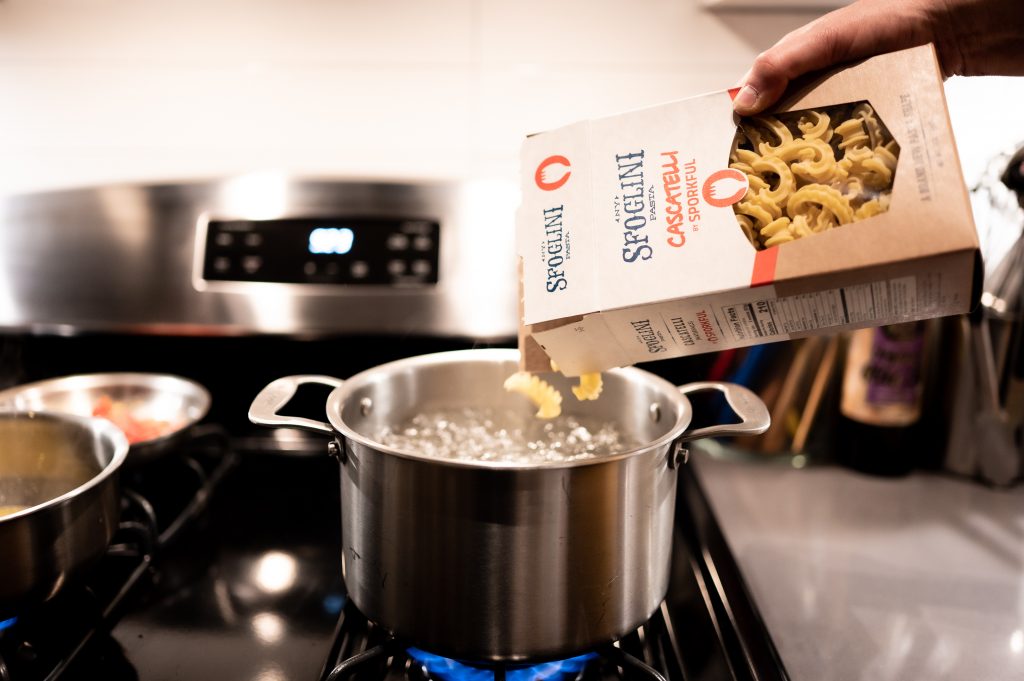
Getting the die made was by far the most complex part of the journey. There are very, very few bronze pasta die makers—in fact, there’s only one in the US—and getting them on board, in the middle of a very busy pandemic-fueled year of high pasta sales required a lot of time and finesse. With a new die pushing out the timeline by more than a year, Sfoglini offered up a die that had been retired and could be retooled. As this is a new shape there’s no easy way to have it be perfect the first pass, so several rounds, each very expensive and time consuming, were required to produce the shape of Pashman’s dreams and were potentially project killers. Through a lot of perseverance, charm, patience and the desire to create something new, he and Sfoglini persevered and Cascatelli was born.

Once the form was decided, a name had to be chosen. “I wanted the name to sound like a pasta shape that seems like it’s always been there,” Pashman says. The shape conjured up all kinds of imagery: a bass clef, ’70s ruffled shirts, a centipede, a millepede. “There was a period where I really thought we’re gonna call it Millepidi,” he says. “I love the sound of it, but there were two problems: one is, when written, I was afraid people would be saying ‘millepie-dy’; the other problem is that people don’t want to eat pasta that makes them think of bugs,” he says with a laugh. Taking a little poetic license, they settled on Cascatelli from the Italian word “cascate,” meaning waterfalls. This not-quite-Italian name perfectly encapsulates the project, which combines tradition with experimentation, innovation and a playful sense of curiosity.
Available exclusively from Sfoglini, Cascatelli launches today: $5 for a 16-ounce box and $18 for a four-pack. You can listen along to the journey with Sporkful’s five-episode series Mission ImPASTAble.

